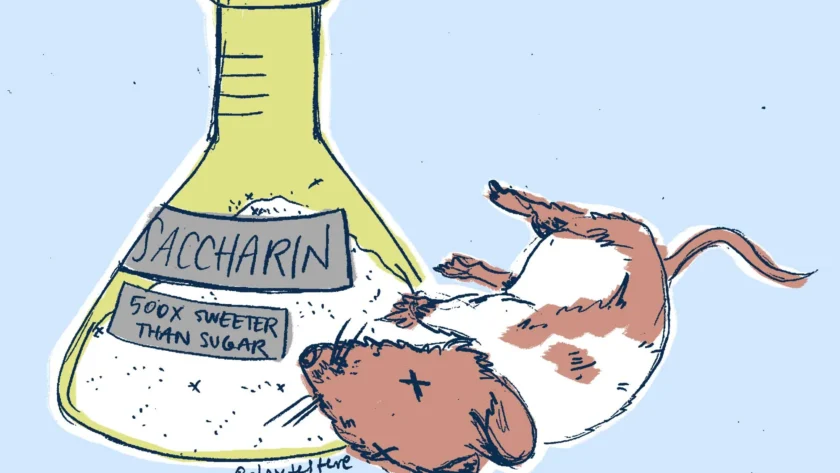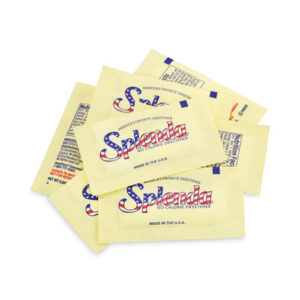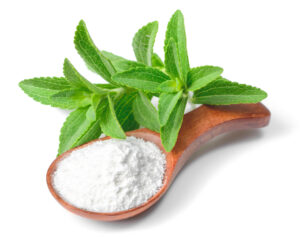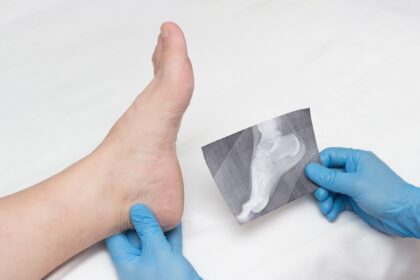Artificial sweeteners have been a part of my family’s life since I was a little girl. They’ve been around for much longer than that but became widely popular in 1981 when the FDA approved Aspartame as a tabletop sweetener.
My Grandmother would always reach for the pink packets of Sweet n’ Low for her morning cup of coffee, and I can still remember the nostalgic 1990’s commercial with Marj Dusay, “Nobody’s that good”. And what about when Splenda came out?
My Mom (who needs to avoid sugar for medical reasons) was ecstatic to be able to cook and bake without worry of getting sick, all while keeping it “healthy” because it had zero calories to keep you skinny!
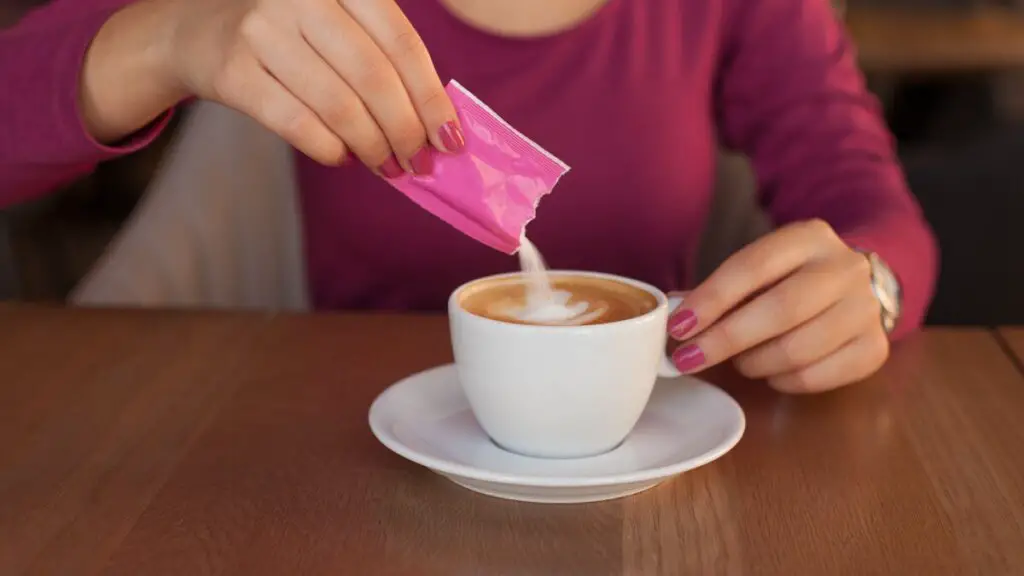
Fast forward to today. There are six high-intensity artificial sweeteners that are FDA-approved as food additives in the United States.
Also known as Non Nutritive Sweeteners, we will call them NNS to save some time — Saccharin (Sweet n’ Low), Aspartame (Equal), Acesulfame Potassium (Ace-K), Sucralose (Splenda), Neotame, and Advantame. These food additives are several thousand times sweeter than table sugar and can be found in just about every food product that is labeled “Low Calorie”, “No Calorie”, “Lite/Light”, “Diet”, “Sugar-Free”, and “No Sugar Added”.
They are especially popular in flavored “health supplements” and even found in many processed foods that don’t have dietary labels.
You can also find NNS in these every day items like:
Toothpaste, mouthwash, chewable vitamins, prescription and OTC medication, liquid medicine like cough syrup, chewing gum, Nicorette Gum, low/no calorie water/drinks, alcoholic beverages, condiments like ketchup, BBQ sauce and salad dressings, yogurt, pudding, candy, bread, baked goods, sweetened breakfast foods, cereal, processed foods, prepared meats/lunch meat… the list could continue.
Truth is, they use NNS for many reasons, a big one being that they are much cheaper to produce, and can allow for a higher profit yield because they can sit on a shelf for a longer period of time.
Ok, time for a short history lesson on these artificial sweeteners.
Saccharin was discovered accidentally in 1897 by a Johns Hopkins University researcher who was looking for new uses for coal tar derivatives. He forgot to wash his hands before lunch and tasted something sweet on his fingers. After tasting everything in his lab to determine the source, he figured out it was benzoic sulfimide, a coal tar derivative that is 300 times sweeter than sugar.
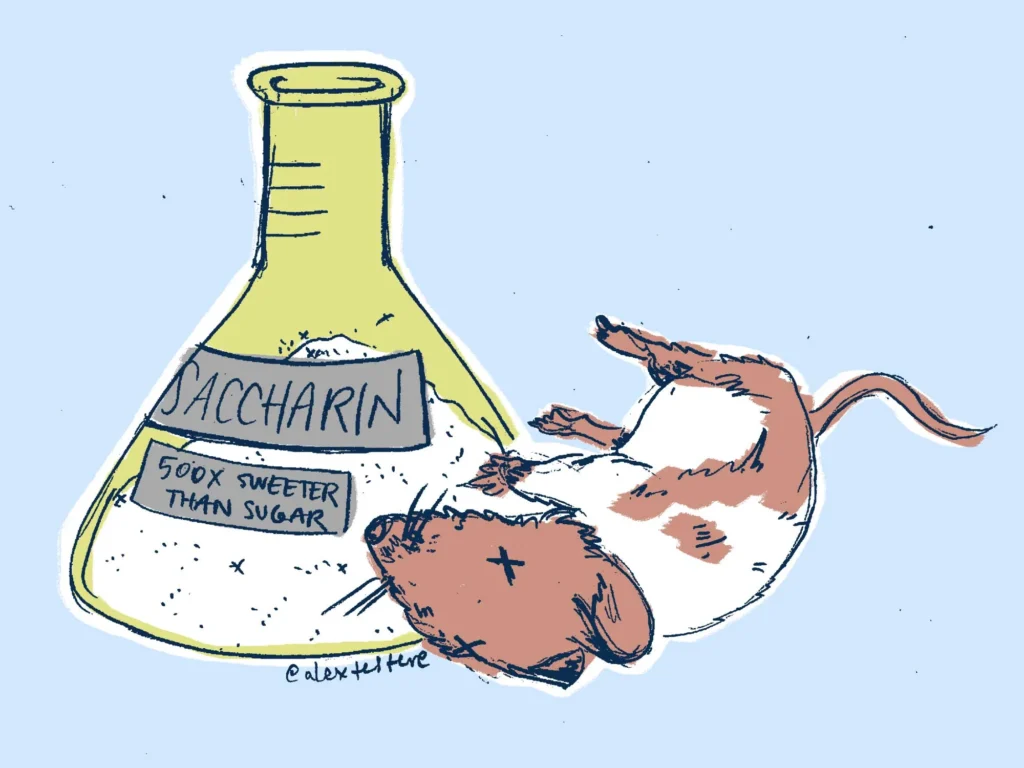
(Fun fact: Monsanto got its start in 1901 selling Saccharin.)
By 1907, Saccharin was already widely used in sodas and canned goods, but most Americans had no idea it was in their food at that time. Harvey Wiley, head of the chemical division of the US Department of Agriculture, recommended banning Saccharin for possibly being toxic.
The sweetener was eventually banned in 1912, but the decision was reversed during World War I, when sugar rations necessitated the use of saccharin as a substitute. Once the war was over, people continued to enjoy the calorie-free sweetener.
The introduction of a sweetener called Cyclamate to the American market coincided with the diet soda boom of the 1950s. Cyclamate was used in Diet Pepsi and what filled the iconic pink packets of Sweet’N Low. The substance was discovered in 1937 when a University of Illinois grad student working on a fever-reducing drug tasted something sweet on his finger during a smoke break.
(This is information from a History website, I did not make this up. I’m sure the discovery of these multi-billion $$$ chemical sweeteners was just an “accident”, right?)
Cyclamate is 30-50 times sweeter than sugar, costs a tenth of the price of sugar and with zero calories. By 1968, Americans were consuming more than 17 million pounds each year. That all came to a halt when the sweetener was proven to cause bladder cancer in rats, resulting in an immediate ban by the FDA that’s still in effect. In response, Sweet’N Low swiftly became a saccharin-based product.
In the next “accidental” discovery, James Schlatter, a research chemist for G.D. Searle and Company, licked his fingers while developing a new ulcer drug in 1965 and, yes, tasted something sweet. That was Aspartame, an amino acid compound (a mixture of aspartic acid and phenylalanine) that is 200 times sweeter than sugar.
After a holdup with the FDA in 1974, when approval was paused due to claims that Aspartame caused brain tumors, the sweetener finally hit the market as Nutrasweet in 1981. According to the Oxford Companion to Sugar and Sweets, Aspartame replaced more than a billion pounds of sugar in the American diet during the 1980s. (Diet Coke with Aspartame was launched at this time.)
Though health complaints and investigations linked to both Aspartame and Saccharin persisted throughout this period, consumption of diet sodas continued to climb in the ‘80s and ‘90s, eventually plateauing in the aughts.
Sucralose, which was later marketed as Splenda, was created in 1976 when scientists found a way to molecularly bond sucrose molecules with chlorine. (Yes, chlorine the neurotoxin.) One researcher was asked to “test” the chlorinated compound but misheard the request and tasted it instead. The researcher survived and in so doing paved the way to a product that is about 600 times sweeter than sugar.
Unlike the artificial sweeteners that came before it, Sucralose is partially metabolized by the body, which means it does deliver calories. Also unlike the others, it’s heat-stable, which means you can bake with it. Thus, Splenda has replaced NutraSweet as the most widely consumed sugar substitute on the market. [1]
Well… we thought we could bake with Splenda?
In one study, it was found that harmful substances referred to as chloropropanols were produced by heating Sucralose with glycerol (present in fats). Chloropropanols may increase the risk of certain cancers.
It was also found that Splenda can have damaging effects on our gut heath. One study done on rats found that Sucralose had adverse effects on the good bacteria of the gut. After 12 weeks of consumption of the sweetener, beneficial bacteria such as Lactobacilli and Bifidobacteria were significantly reduced in the rats.
Moreover, the bacteria present in the gut had not returned to normal levels even 12 weeks after the experiment ended. We need good bacteria in the gut to maintain our overall health. They improve function of immune system, improve digestion and decrease the risk of multiple diseases.[2]
The Center for Science in the Public Interest (CSPI), downgraded their safety ratings for Splenda from “safe” to “caution” in June 2013 and from “caution” to “avoid” in February 2016.[3]
Now, the FDA has approved the use of those 6 NNS’ within our diet, and according to the National Cancer Institute and other health agencies, there’s no sound scientific evidence that any of the NNS’ cause cancer or other serious health problems.
In fact, numerous studies confirm that NNS’ are generally safe in limited quantities, even for pregnant women.[3] OK, so if they are generally safe in limited quantities… what is the acceptable daily intake (ADI) of artificial sweeteners?
According to the University of Alabama at Birmingham–
(Because I couldn’t find any information on ADI through the FDA’s website)
– Saccharin/Sweet n’ Low has an ADI of 5 milligrams for each kilogram of body weight. One packet of Sweet n’ Low contains 36 milligrams of Saccharin.
– Aspartame/Equal has an ADI of 50 milligrams for each kilogram of body weight. A packet of Equal contains 37 milligrams of Aspartame.
– Sucralose/Splenda has an ADI of 5 milligrams for each kilogram of body weight. A packet of Splenda contains 12 milligrams of Sucralose.
— If you divide your weight by 2.2, you will get your weight in kilograms.
It is worth mentioning that the United States acceptable daily intake of NNS is higher than any other country in the world.
So my next question is, how do we know how much artificial sweetener is in what we are ingesting? When looking at the listed ingredients on the back of any processed food box/bag, product ingredients are listed by quantity, from highest to lowest amount.
But without any mention of how much that quantity actually is, we really have no idea how much we are ingesting every day unless we are going out of our way to avoid it, and reading every ingredients list that we come across. Some items like medications don’t offer an ingredients list at all.
My point? It’s damn near impossible for us to really know how much artificial sweetener we are ingesting without avoiding it completely.
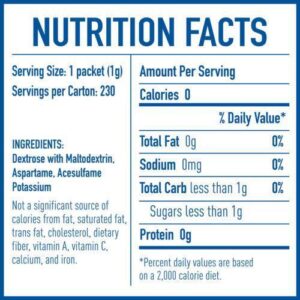
In a new study published this month in the peer-reviewed British Medical Journal, experts from the Sorbonne Paris Nord University assessed artificial sweetener consumption by a French group of just over 103,000 participants.
The study found consumption of NNS’ is linked to a 9% higher risk of cardiovascular disease and an 18% increase in risk of stroke.
Aspartame, Acesulfame Potassium and Sucralose were the most consumed NNS’. Aspartame, which represents about 3/5 of NNS consumed in the U.S., was linked to a 17% higher risk of stroke.
Acesulfame Potassium and Sucralose were linked to a higher risk of coronary heart disease. Aspartame, Acesulfame Potassium and Sucralose were the most consumed artificial sweeteners.
Aspartame, which represents about 3/5 of artificial sweetener consumed in the U.S., was linked to a 17% higher risk of stroke. Acesulfame Potassium and Sucralose were linked to a higher risk of coronary heart disease.[4]
Known side effects caused by NNS’ include headaches, migrains, seizures, weight gain, cardiovascular disease, depression, stroke, heart attack, and death. NNS’ confuse the brain because your brain is expecting calories coming with the sweet taste.
This leads to further food cravings causing weight gain, obesity and food addiction. Those who ingest NNS’ have a higher risk for Glucose Intollerance, and developing Type-2 Diabetes and Metabolic Syndrome.
There is no question, the increased use of NNS’, obesity rates, and heart disease being the number one cause of death in the United States correlates to some degree. One large issue in all of this is the lack of ingredients transparancy.
If it is now proven that NNS’ increase a persons risk of all issues listed above, there needs to be a clear understanding of what NNS’ are present, and how many milligrams per serving. Until the FDA puts this ruling into effect, there is only 1 way to protect yourself.
Fight the chemical warfare!!
Click Here To Get Organic Stevia From Omica Organics.
Use the discount code: healthywildfree for 10% off your order!
That may be a little dramatic… but if you want to take your health seriously (and protect your children from this poison), then you must be vigilent and proactive. Some of the ways you can keep you and your family away from NNS’ is to READ THE INGREDIENTS LIST.
I cannot say this enough. Stay away from processed foods that have ingredients you have a hard time pronouncing. Eat a more natural diet including fresh produce and whole foods. If you are drinking a lot of soda and juice, consider switching to low-acidic, fair trade coffee, tea, or water with fruit and sweetening with organic sugar or stevia, the best option there really is. Use the discount code: healthywildfree at OmicaOrganics.com to get 10% off your stevia order.
I love this stuff, it’s delicious and comes in multiple flavors. Take a look:
What is Stevia?
Stevia is the name given to a green leafy herbal plant, which is native to South America and has been used for hundreds of years because of its extremely sweet leaves. Stevia is more than 40x sweeter than sugar but does not affect blood sugar levels.
It also does not have the negative side effects on the body, unlike NNS. It grows in the tropical portions of North and South America, but it isn’t well-known as a plant.
As more research emerges about this wonderful new option for people on carbohydrate-controlled diets, the number of countries who are approving Stevia as a sweetener and a food additive has been rising. In 2011, the EU gave permission for stevia to be used throughout the 27 nations.
Depending on the level of processing, Stevia can be found in three forms.
Green Leaf Stevia: This is the least processed form of Stevia. It is 30-40 times sweeter than sugar and is also slightly bitter to taste.
Stevia Extracts: Its extracts are 200 times sweeter than sugar and comparatively less bitter to green leaf Stevia.
Altered Stevia: This is the highly processed form of Stevia which contains GMO ingredients. It is 200-400 times sweeter than sugar and is often termed as the worst form of Stevia.
Stevia has a very low calorific count pushing it in the ‘no-calorie’ food zone. Currently, its leaf is not known to have any nutrients present in it other than carbohydrates and stevia glycosides. Stevia also has many health benefits.
A large benefit that wins in combat over its chemical counterpart is its ability to regulate blood sugar levels in the body. This is an ideal replacement for normal sugar for diabetics or people on carbohydrate-controlled diets because they can eat sweet foods without having to worry about diabetic complications.
Stevia is 40-300x sweeter than sugar but with naturally little to no calories. So those looking to lose weight can eat sweets made with stevia without worry of gaining weight from excess calories. This can also help in controlling excess sugar content in children’s diet.
Another benefit to Stevia is the glycosides that can actually relax the blood vessels, increase urination, and facilitate the elimination of sodium from the body. This means that less stress is put on the cardiovascular system and there can be a drop in blood pressure, which protects heart health and prevents certain conditions such as atherosclerosis, heart attacks, and strokes. [5]
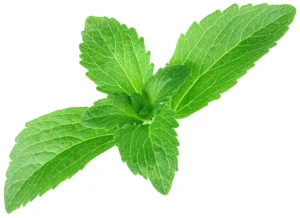
Possible Anticancer Potential
The possibly rich source of antioxidant compounds that may be found in stevia makes it an ideal dietary supplement for the prevention of various cancers including pancreatic cancer.
Dr. Jocelynn E. Thomas and Dr. Michael J. Glade published a report in The Open Obesity Journal, which states that stevia leaf extracts exhibit a high degree of antioxidant activity. It is also reported to inhibit hydroperoxides formation in sardine oil with a potency greater than that of either L-α-tocopherol or green tea extract. [6]
Quercetin, kaempferol, and the other glycoside compounds in stevia help to eliminate free radicals in the body, thereby preventing them from mutating healthy cells into malignant ones. Antioxidants also help to prevent premature aging, cognitive malfunction, and various other conditions like heart disease. [7]
May Lower Cholesterol Levels
Studies show that consumption of stevia leads to a significant reduction in bad LDL cholesterol and triglyceride levels and an increase in the HDL cholesterol levels, which is healthy cholesterol and is essential for good lipid profile. [8]
May Aid in Maintaining Oral Health
Stevia has been found to reduce bacterial formation in the mouth, making it a popular additive for toothpastes and mouthwashes. It may also prevent cavities and gingivitis, which sucrose certainly doesn’t do! [9]
May Help Improve Skin Care
Stevia is useful against skin conditions such as eczema and dermatitis. Topical application of it inhibits the spread of bacteria and acts as a steroid in these situations, making it a popular option for many people who can’t get relief from these conditions. [10]
Along with all the health benefits mentioned above, Stevia is also known to possess anti-diarrheal, anti-hyperglycemic, antihypertensive, diuretic, anti-inflammatory, anti-diarrheal, and immune-modulatory actions. [11]
In summary, while artificial sweeteners were once thought to be a healthy alternative to sugar, mounting research shows they may have unintended consequences. Studies link consumption of artificial sweeteners to increased risk of obesity, metabolic syndrome, type 2 diabetes, and cardiovascular disease. These sweeteners appear to disrupt gut bacteria, interfere with appetite signaling, and cause glucose intolerance.
Rather than turning to artificial sweeteners, consumers concerned about sugar intake may want to moderate sugar consumption and focus on a balanced, whole foods diet. Additionally, natural sweeteners like stevia and monk fruit extract do not seem to carry the same health risks and can be used judiciously by those looking to cut back on sugar without artificial additives.
As our understanding of how sweeteners interact with the body continues to evolve, artificial varieties are looking less and less like the guilt-free solution they were once thought to be. Moderation and sticking to nature-based sweeteners appear to be better strategies for long-term health.
